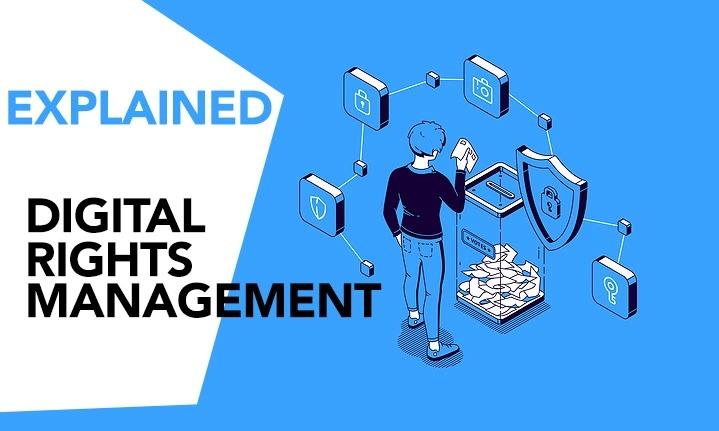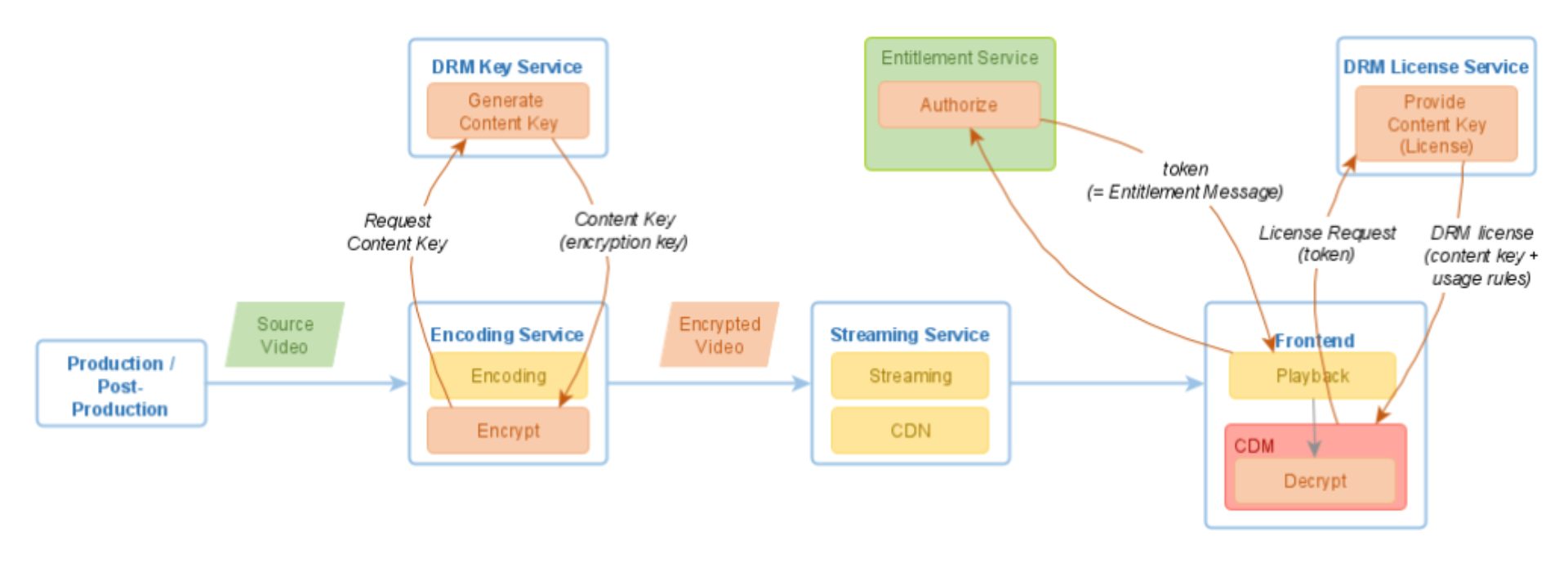Role of CDN in Content Protection and DRM

Content Delivery Networks (CDNs) play a crucial role in protecting digital content from unauthorized access and infringement. They work in conjunction with Digital Rights Management (DRM) systems to ensure that only authorized users can access and consume protected content.

Content Protection Features of CDNs:

- Secure Content Delivery: CDNs use secure transmission protocols (e.g., HTTPS, SSL/TLS) to encrypt data in transit, preventing it from being intercepted by malicious actors.
- IP Restriction: CDNs can enforce IP restrictions to limit access to specific geographic regions or IP addresses. This prevents unauthorized users from accessing content outside their permitted areas.
- Geographical Restrictions: CDNs can also implement geographical restrictions to comply with copyright laws and licensing agreements. This ensures that content is only distributed in authorized territories.
- Access Control Lists (ACLs): CDNs allow administrators to create ACLs to define who can access specific content. This enables fine-grained access control and prevents unauthorized individuals from gaining access.
- Watermarking: CDNs can embed invisible watermarks into content to identify the source and copyright owner. This helps deter piracy and makes it easier to track down infringers.
DRM Integration:
CDNs integrate with DRM systems to provide additional protection layers:
- Encryption: DRM systems encrypt content before distribution, making it inaccessible to unauthorized users without the decryption key.
- Tokenization: CDNs generate and distribute DRM tokens (certificates) that allow authorized users to decrypt and view protected content.
- License Management: DRM systems handle license management, ensuring that only authorized users receive valid tokens and can access content legally.
Benefits of Using CDNs for Content Protection:
- Improved Security: CDNs provide robust security measures to protect content from unauthorized access and piracy.
- Compliance: CDNs help businesses comply with copyright laws and licensing agreements by enforcing geographical restrictions and access control.
- Faster and Reliable Delivery: CDNs distribute content from multiple edge locations, reducing latency and ensuring seamless delivery.
- Scalability: CDNs can handle large volumes of traffic and scale up or down to meet changing demand, ensuring uninterrupted access to protected content.
By leveraging the security features of CDNs and integrating with DRM systems, businesses can effectively protect their digital assets from piracy, unauthorized access, and infringement. This enables them to monetize their content securely and ensure that only legitimate users can enjoy the intended experience.The Role Of CDN In Content Protection And DRM
Executive Summary
Content protection and Digital Rights Management (DRM) are essential for safeguarding valuable digital assets and ensuring compliance with copyright laws. Content Delivery Networks (CDNs) play a crucial role in these processes, providing a secure and efficient infrastructure for delivering protected content to global audiences. By leveraging advanced encryption and access control mechanisms, CDNs enable content owners to distribute their content with confidence, knowing that it is protected from unauthorized access, piracy, and copyright infringement.
Introduction
In the digital age, content protection has become paramount as content creators and distributors face increasing threats from online piracy and copyright infringement. DRM technologies, such as encryption and digital watermarking, have emerged as essential tools for protecting digital content, ensuring that it reaches its intended audience while safeguarding the rights of copyright holders. CDNs, with their global reach and robust security features, have become the backbone of content protection and DRM strategies.
FAQs
1. What are the benefits of using a CDN for content protection?
- Enhanced security through encryption and access control
- Reduced piracy and copyright infringement
- Improved content delivery performance and reliability
- Scalability to handle large volumes of protected content
- Compliance with copyright laws and industry standards
2. How does a CDN protect content from piracy?
- Encrypts content during transmission, making it inaccessible to unauthorized users
- Implements access control mechanisms to restrict content access based on geographic location, device type, or subscription status
- Monitors and blocks suspicious IP addresses and malicious requests
3. What is the role of DRM in content protection?
- Encrypts content and embeds digital watermarks to prevent unauthorized copying or distribution
- Controls access to protected content based on user authentication and device authorization
- Detects and disables pirated copies of protected content
Subtopics
Content Protection Mechanisms
- Encryption: Securely encrypts content during transmission using industry-standard protocols, making it inaccessible to unauthorized users.
- Digital Watermarking: Embeds invisible digital markers into the content that can be used to identify and track unauthorized distribution.
- Access Control: Restricts access to protected content based on user authentication, device authorization, or subscription status.
- Forensic Watermarking: Inserts hidden watermarks into the content that can be used to trace and identify the source of illegal distribution.
- Geo-Blocking: Prevents access to protected content from特定的 geographic locations to comply with copyright laws and licensing agreements.
DRM Technologies
- DRM Systems: Implement encryption, digital watermarking, and access control mechanisms to protect content from unauthorized access and distribution.
- Digital Rights Management for Video (DRM-V): Specifically designed to protect video content, including streaming and download formats.
- Digital Rights Management for Audio (DRM-A): Protects audio content from unauthorized copying and distribution, including music and podcasts.
- Digital Rights Management for eBooks (DRM-E): Controls access to and prevents unauthorized copying of eBooks and digital publications.
- Device Authorization: Ensures that protected content can only be accessed on authorized devices, preventing unauthorized access and distribution.
CDN Security Features
- Secure Protocols: Uses advanced security protocols, such as TLS and SSL, to encrypt data transmission and protect against eavesdropping and man-in-the-middle attacks.
- Data Encryption: Encrypts content at rest and in transit using industry-standard encryption algorithms, ensuring data privacy and integrity.
- Access Control Lists (ACLs): Granularly controls access to content based on IP address, device type, or user authentication, preventing unauthorized access.
- Web Application Firewall (WAF): Protects against web-based attacks, such as SQL injection and cross-site scripting, which can compromise content security.
- Intrusion Detection and Prevention Systems (IDS/IPS): Detects and mitigates malicious activity, including distributed denial-of-service (DDoS) attacks that can disrupt content delivery.
Scalability and Performance
- Global Network: Operates a global network of servers to ensure fast and reliable delivery of protected content to a global audience.
- Load Balancing: Distributes traffic across multiple servers to handle large volumes of content requests without performance degradation.
- Caching: Caches protected content on edge servers, reducing latency and improving content delivery speeds.
- Content Optimization: Optimizes protected content for different devices and network conditions, ensuring the best user experience.
- Real-Time Monitoring: Monitors content delivery performance and security in real-time, enabling quick detection and resolution of any issues.
Compliance and Standards
- Compliance with Copyright Laws: Adheres to copyright laws and industry standards to ensure compliance and avoid legal liability.
- Digital Millennium Copyright Act (DMCA): Complies with DMCA regulations for takedown requests and protection against online piracy.
- ISO 27001 Certification: Demonstrates adherence to international standards for information security management.
- Media Entertainment Services Alliance (MESA): Aligns with industry best practices and standards for content protection and DRM.
- Motion Picture Association (MPA): Complies with MPA requirements for the secure distribution and protection of motion picture content.
Conclusion
CDNs play a pivotal role in ensuring the effective protection and delivery of digital content. By leveraging advanced security features, DRM technologies, and a global network, CDNs enable content owners to distribute their creations with confidence, knowing that their intellectual property rights are safeguarded. As the demand for secure and reliable content protection continues to grow, CDNs will remain essential partners in the digital content ecosystem.
Relevant Keyword Tags
- CDN Content Protection
- DRM
- Digital Rights Management
- Content Encryption
- Access Control
